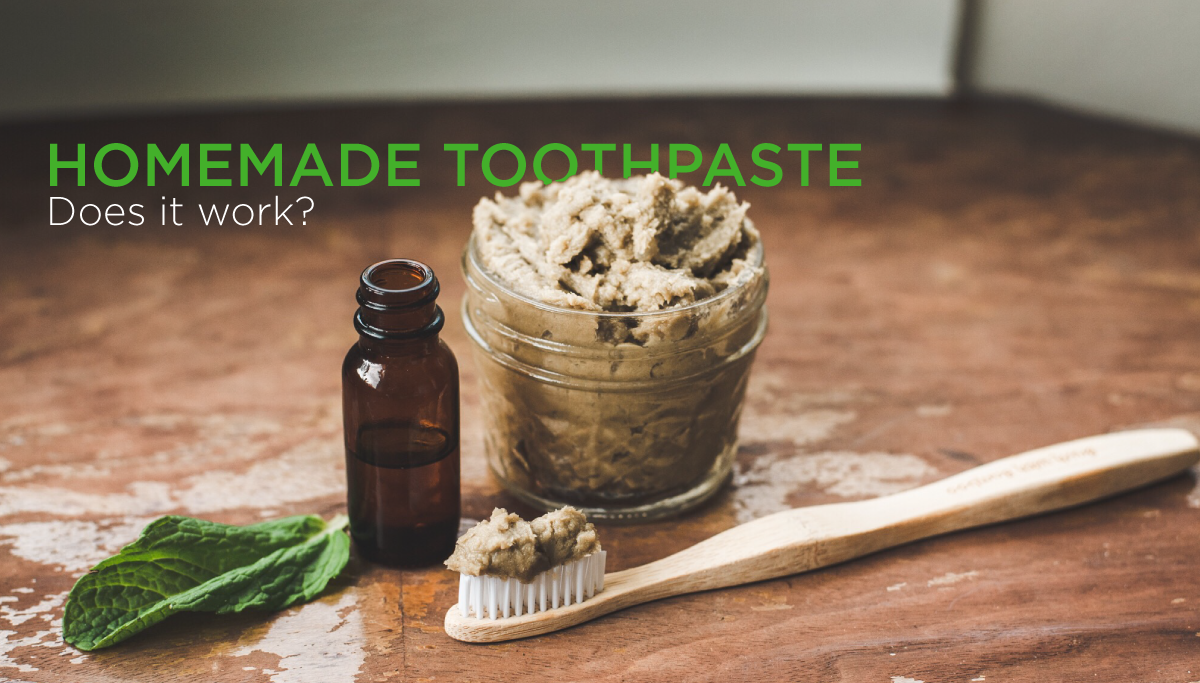
On the hunt for a homemade toothpaste recipe? Be sure your toothpaste has what it takes to prevent cavities and clear harmful bacteria from the mouth.
Brushing our teeth does a lot more than freshen our breath. We brush our teeth to remove plaque. Plaque is the build-up of sticky bacteria from food. It can turn into a rock-hard substance called tartar if it’s not removed. Dental plaque and tartar are harmful to oral and overall health. They not only cause tooth decay and periodontal disease in the mouth, but they are also connected with heart, lung, brain, and kidney conditions.
Your best bet is to rely on the 160 years of oral health experience of the American Dental Association (ADA). The ADA has a seal of acceptance they give to dental products. The ADA Seal of Acceptance is universally seen in the dental industry as safe and effective, so look for it on toothpaste packages when you’re buying toothpaste at the store. Or browse the list of toothpastes on the ADA website.
Many homemade toothpaste recipes claim to be as effective as commercial toothpastes.
Curious what these homemade toothpaste recipe ingredients really do? Keep in mind that just because an ingredient is natural doesn’t mean it’s healthy. Homemade toothpaste can sometimes cause more harm than good to your mouth and smile.
Coconut Oil – Studies on the effect of coconut oil on the mouth are becoming more common. But, there isn’t enough scientific evidence to prove that coconut oil or oil pulling are effective dental health practices.
Baking Soda and Charcoal – Scrubbing your teeth with abrasive materials like these may seem like it would polish away stains. Unfortunately, if we scrub our teeth too hard, it can wear away the enamel that protects our teeth from cavities. Plus, when the outer coat of enamel is worn away, the softer yellow tissue called dentin shows, making your teeth look more yellow.
Lemon Juice – Acidic liquids like lemon juice can also erode our enamel. When combined with an abrasive like baking soda, it’s a homemade toothpaste recipe for disaster. It’s also why you’re not supposed to brush your teeth right after vomiting (it rubs your stomach acid into your teeth).
When looking for a toothpaste that works, it's helpful to know what active ingredients the ADA recommends. Cavity-fighting ingredients have different names. You may see “sodium monofluorophosphate,” “sodium fluoride,” or “stannous fluoride” on the ingredients label. They also fight cavities. These are the only ingredients the FDA certifies as preventing cavities, as all ADA-Accepted toothpastes must contain fluoride.
Fluoride is considered “nature’s cavity fighter.” It’s been proven to significantly reduce cavities and cavity-causing bacteria since the 1960s. When we have fluoride in our toothpaste, it gives our mouths super cavity-fighting powers.
Toothpaste also uses “abrasive agents” to help gently scrub away surface stains and plaque. The ADA recognizes certain ingredients as cleaning the teeth. They may also help whiten teeth by physically removing surface stains. Look for the following on the ingredients label:
Detergents, sugar-free flavoring agents, and ingredients to hold moisture all help a toothpaste work effectively.
Toothpastes are sometimes made with flavoring agents that make them tastier. Unfortunately, some brands include sugar for flavor. The ADA won’t certify any toothpaste with sugar in it since sugar is directly associated with cavity-causing bacteria.
Make it easy on yourself and choose a toothpaste with the ADA Seal of Acceptance. The Seal lets you know the toothpaste you choose is safe, effective and won’t damage your teeth.